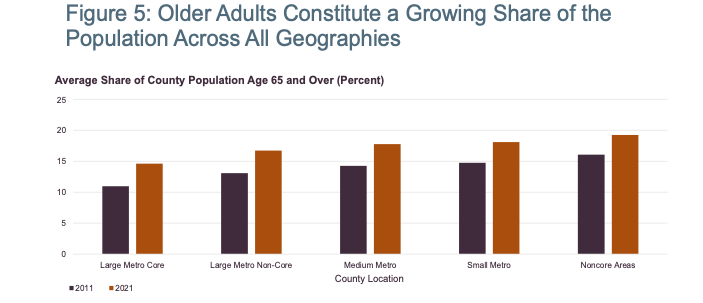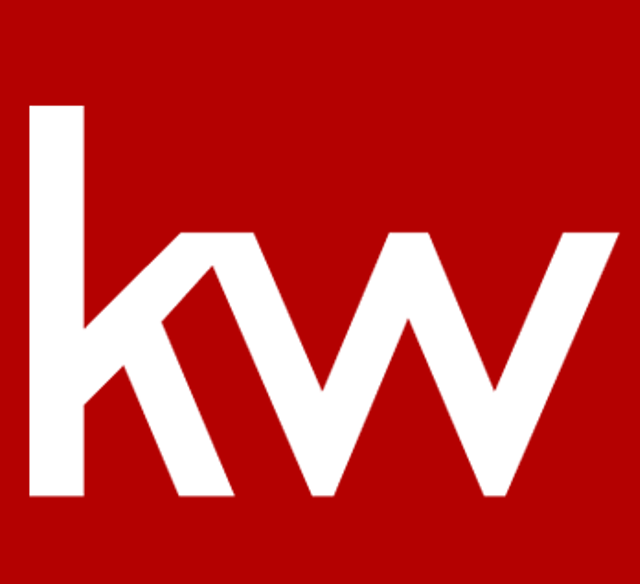Buying a home has lots of steps. Once a home buyer is “under contract” on a property, it’s common for them to hire a professional home inspector as the next step. This contingency allows the home buyer to determine whether anything is wrong with the property before purchasing it.
A home inspection typically takes 2 to 4 hours and can reveal plenty of problems with a home. This article covers the 18 most common issues found during a home inspection.
-
HVAC Needs Servicing
Your HVAC system uses almost half of the energy in your home. It works hard every year to keep your home climate-controlled. Therefore, it tends to need servicing quite often. Unfortunately, many people do not service their HVAC systems yearly, which results in issues during the home inspection.
The average home inspector will not do an in-depth job of inspecting the furnace and AC. If you purchase a home with an HVAC system over ten years old, hiring an HVAC specialist to perform a complete system check is wise. This step will help you determine the remaining life of the unit and project future repair costs.
Some common HVAC issues include:
- Dirty Filters (most common issue)
- Improper Flue Installation
- Dirty Coils
- Unlevel Pad
- Cracked Heat Exchanger
- Broken Condenser
-
Water Intrusion
Water damage can be tricky to identify. Thankfully, inspectors are fully trained to find this issue and recommend repairs.
Your roof will often be the first spot for water to leak and will travel downwards. Inspectors will usually start in the attic when looking for water damage from the top of the house. Some of the signs of water damage include the following:
- Cracks and holes– Cracks or holes on the exterior walls are prime spots for water to enter your home.
- Warped floors and damp carpets
- Stained walls and ceilings– Even if the stain results from an old leak that has been repaired, inspectors will still check for mold buildup.
- Peeling paint and wallpaper– This issue may indicate a leak behind the walls.
- Musty odors– This problem can indicate mold buildup, often caused by leaks.
Some water intrusion may result from small leaks, but your inspection report will include details on the breadth of the problem. In addition, it will explain the steps to take to remediate the situation if needed.
-
Roof Problems
Your roof will be one of the critical components an inspector will pay attention to during a home inspection, as it’s one of the essential parts of your home. If the roof leaks, there will be a list of other issues that will follow, which will cause some buyers to back out of a deal. It can be a costly fix on their part.
The condition of your roof will be affected by many factors, some of the main ones being the weather. If you live in an area with a harsh climate, your roof will require more attention than one in a mild climate.
Here are some of the everyday things an inspector will look for during a roof inspection:
- Sagging– This problem occurs when the joists of your home are weakened and cannot properly hold the roof in place. This issue can be exacerbated by large amounts of snow or poor drainage from your roof.
- Overall condition of the roof sheathing– Particularly in areas around chimneys or other roof penetrations and valleys of the roof.
- Soft spots that indicate leaks– These can be further identified by a deeper look in your home’s attic.
An inspector will assess your roof in two different ways. First, if the weather allows and the environment is safe, they will walk the roof to understand its condition.
Second, they will enter your attic. Working in the attic allows them to see areas where current or past leaks have occurred. They will also see signs of roof sagging, spreading, and twisting of the rafters.
-
Electrical Wiring Issues
Every year, it is estimated that 51,000 of the fires in homes are due to electrical wiring problems. So, the electrical system is another critical component of a home’s inspection. Most newly built homes will not have electrical issues. However, older homes with outdated wiring areas are susceptible to fires.
Some of the most common electrical issues an inspector will find are as follows:
- Exposed wiring and fraying
- Painted outlets– which can cause overheating. Common in properties once used as rentals.
- Reversed polarity– This means that the plugs’ hot, neutral, and ground slots have somehow been mixed up.
- Aluminum wiring– Aluminum was considered more cost-effective than copper wiring in the late ’60s and early ’70s, but it can contribute to the potential for a fire in your home.
- Improper modification of electrical panels– This issue can cause intermittent flickering of lights or your switches and outlets not working correctly.
- Missing knockouts– or rectangular shapes missing in a panel
An inspector will check the condition of your electrical panels and outlets, your light fixtures, and the type of wiring in the home. They will include this suggestion in your report if they feel a system needs to be updated. However, if they think a specific area is vital to be fixed upon move-in, they will flag it.
Some electrical fixes will be of relatively low cost. For example, if the entire home needs to be re-wired, it can cost up to $30,000+.
-
Poor Ventilation
While you likely will not run into issues with the ventilation in newer builds, older homes usually have ventilation problems. Poor ventilation will lead to moisture buildup, wood rot, termite infestations, mold development, and foundation issues. Home inspectors will trek into your attic to determine the state of your home’s ventilation.
Why is ventilation important? Poor ventilation can result in much more work for your HVAC system to keep your home cool and comfortable.
If there is not enough ventilation within your home, a large amount of heat will build up in your attic, raising the overall temperature of your home and sending your cooling system into overdrive. Proper ventilation equals more energy efficiency.
-
Poor Drainage and Grading
What is the importance of grading regarding your home’s foundation? Grading refers to the slope present in the area surrounding your home’s foundation. Ideally, you want the slope to face away from your house. Therefore, the water will flow away from the structure rather than towards it.
The insufficient slope will result in water pooling towards your home’s foundation. This problem can result in a flooded basement, damp crawl spaces, cracks in the foundation, and even shifting in your home’s foundation. Structural issues can be very costly.
In an ideal world, the grading surrounding your home is anywhere from three to five percent slope away from the property. In other words, for every two or three feet you step out from your property, the land should drop by two or three inches.
How can you tell if your home might have some issues with the grading on your lawn? Here are some signs to look for:
- Windows that are not square or that look off-kilter
- Interior doors with significant, uneven gaps at the top when closed
- Interior doors that visibly swing to one side or the other when left ajar
- Floors that visibly slope to one side or the other
Correcting grading around your home can be pretty costly. However, depending on who you hire to help with the issues, they may re-grade the land. This step will involve adding fill near your home’s foundation and tamping it down.
The inspector may also recommend installing a French Drain at a low point in your yard. Water is directed into the drain and out to a different part of your yard that can handle it.
Grading your yard is a tough job. Although it can be costly to fix, you will face an even heftier price tag if it is left unattended and damages your home’s foundation.
-
Plumbing Issues
Plumbing issues within a home can be pretty common and very costly. Unfortunately, homeowners may not even realize an issue until inspection, as most plumbing issues present as low water pressure or a slow drain.
The majority of the time, an inspector will pay attention to the following when inspecting your plumbing:
- Whether or not water flows from your taps effectively
- Whether or not your drains work properly
- And whether or not your toilets flush
A home inspector will not be as detailed in their plumbing inspection as a professional plumber; however, they can give you an overview of the issues that need to be addressed upon move-in, if any.
They will likely recommend a professional plumbing inspection if they think there may be a more significant issue outside their expertise. However, rest easy knowing that most plumbing issues found during a home inspection are minor.
-
Foundation Flaws
Foundation problems are perhaps one of the most problematic areas of a home inspection for most buyers. Your home’s foundation is one of the most critical components of its overall structure, so finding an issue here can be very stressful and costly to resolve.
The following factors can cause foundation issues:
- Drainage problems – If your yard is sloping or grading is off, water can settle near your home’s foundation, leading to damage.
- Missing or inadequate steel reinforcement in the foundation
- Intrusive tree roots
- Installation of a second story without reinforcing the original footings
- Natural occurrences like earthquakes, sinkholes, or landslides.
How can you tell if your home may have foundation issues? One of the most significant signs will be cracks in the interior or exterior walls of the house. Some minor signs include tile cracks, bowed walls, siding separation, or uneven floor.
In a perfect world, the seller will have done their best to uncover any foundation issues before listing their home, as not doing so could result in costly negotiations. However, some sellers will wait to see what the market will offer for their home and not worry about fixing an issue that could cost them thousands of dollars.
Therefore, thoroughly inspecting your foundation is a good idea when buying a house.
-
Blocked Gutters or Downspouts
Many people do not stop to consider the importance of gutter conditions. When inspecting your gutters, the inspector will look for the following:
- the guttering system is adequately sized for your home to protect against runoff,
- that the channels are free of rust, cracks, and holes that will cause leaking and
- that the downspouts divert water away from the home’s foundation
Why is it so important to look at your gutters during a home inspection? Because they play a massive role in keeping your home safe from water intrusion.
If your gutters are blocked, cracked, or not diverting the water far from your home, it will settle near your home’s foundation. Over time, erosion will occur, and you will likely develop cracks in your home’s foundation, the perfect environment for water to enter your home.
In addition to the toll it will take on your home’s foundation, water inside your home can find its way into wooden joists, etc. This problem will encourage the development of mold, wood rot, and termite infestation.
Although maintaining your gutters may be annoying, the payoff is excellent. But, of course, you’ll want to deal with any water issue up front before moving into the home.
-
Mold
This component of the home inspection is heavily tied to issues with your plumbing and ventilation systems. For example, if a leak is present, you live in a humidity-heavy climate, or the ventilation systems in your home are outdated, you will be at high risk for developing mold within your home.
Contrary to popular belief, mold will not always be visible to the naked eye. However, you can usually smell mildew in the air when it is present. Mold is prevalent around windows and doors, but it is also a frequent visitor in your bathroom and kitchen. When looking over your home, inspectors will be on the lookout for the following signs:
- A musty, mildew smell
- Signs of warping or cracking around materials such as tile, caulk, etc.
- Moisture buildup in areas with low light or visibility (prime spots for mold)
- Visible mold that will lighten upon application of bleach
Why is it essential to identify whether or not there is mold in your home?
The first obvious answer is that it can lead to health issues like trouble breathing, itchy eyes, sore throat, and coughing. But mold can also indicate a leak inside or outside your home, which you will want to find before it becomes a more significant issue.
If mold is found in the home, there are many ways in which you could try to remove it on your own. However, if the problem is too severe, hiring a professional for mold remediation in your home is always recommended.
-
Termite Damage
Termite inspections are one of the most recommended portions of a home inspection following a purchase. Why is this the case? Because you often cannot see their damage from the outside.
Termites are small insects that feed on the cellulose found in plants, wood, dead leaves, and soil. They often become more active in the spring, feeding on wood from the inside out.
Most of the time, once you notice termite damage with your naked eye, it is too late to resolve the problem just by tinting the home. In addition, replacing portions of the wood in your home’s walls, roof, or foundation will be a very costly.
What are some of the signs of termite damage your inspector will be looking for?
- Buckling floors
- Dry rot in wood floor joists
- Wood rot in door and window frames
- Soft/damp wood
- The presence of mud tubes bored into the soil near the foundation or directly into the home.
- Swarms around indoor or outdoor lights
- Small mounds of what looks like sawdust
Where will your inspector look for termite damage? One of the first areas they will look at will likely be in your crawlspace or basement. These areas are often the first to show signs of moisture, creating the perfect environment for these wood-destroying organisms. Other areas include the following:
- Wall cavities
- Firewood stacked against the side of a home
- Mulch or other landscaping materials near your home’s walls and foundation
- Siding
- Flooring
- Window Frames
A pest control contractor will likely be brought in for proper assessment and treatment if termite damage is noted during the inspection.
-
Wood Damage
This component of a home inspection is very closely tied to termite inspections. During this portion, exposed wood will be what inspectors will focus on the most.
In nature, wood rot is a vital part of the life cycle, but it is not something you want to have present in the house you plan on making your home. Wood rot can lead to the following problems:
- Deterioration of support posts and beams
- Rotted floors and ceiling joists
- Destroyed roofs
- Unstable porches and decks
What causes wood rot? The most common culprit is a combination of moisture and fungi coming together to make a tiny home within the wood. There are three types of wood rot that an inspector will be keeping an eye out for:
- Brown Rot– AKA “dry rot.” The surface of the wood will appear dry, but upon further inspection of its interior, you will find its cellulose has been targeted, breaking into small, cube-like bits.
- White Rot– Noted in wood that takes on a white color and spongy feel.
- Soft Rot– Noted by its honeycomb-like appearance after it breaks down cellulose in the wood. This rot is not commonly found in houses but can be.
If present, repairing wood rot can cost an individual upwards of $20,000.
-
Appliance Issues
Home inspectors examine the appliances within a home to make sure they are in good working order.
Here are some of the typical ones an inspector will look over:
- Your stove range and oven
- The cooktop
- Oven and cooktop vents
- Dishwashers
- Garbage disposals
- Built-in microwaves that convey with the sale of the home
Keep in mind that inspectors are not experts on these appliances. Therefore, they will be unable to fix them themselves if an issue is noted. However, it is their job to ensure that they are working correctly and do not pose any safety hazards to you and your family when you move in.
They often perform tests and checks on the appliances and note any issues in the report. Some of the most common problems include the following:
- Range controls or burners not turning on or heating properly
- Ovens not warming to the proper temperature. Temperature lights not working
- Range hoods not working or being vented into the attic
- Dishwashers not running through an adequate cycle
- Garbage disposal blades not working or not turning on at all.
-
Radon
A radon inspection is usually performed as part of a home inspection. However, sometimes, a buyer may have to request this portion of the inspection specifically.
Why is a radon test recommended? Radon is a colorless, odorless gas that occurs when uranium in soil breaks down. Radon gas is released as a byproduct of that breakdown and can cause many health problems, such as lung cancer.
Although radon is not dangerous in small amounts, it is potentially unsafe when it builds up in your home. In addition, symptoms can take years to present themselves, so it’s essential to consider a radon test during the inspection.
There are a few factors that will indicate a higher risk of radon exposure:
- Location– Areas such as the Appalachian Mountains and upper Midwest have higher amounts of radon present, as sheetrock and wood are frequently used building materials in these areas.
- Foundation Type– Homes built with dirt floors in basements or crawl spaces have nothing to protect against the rise of radon from the soil.
- Foundation Cracks– Cracks provide a perfect spot for the gas to seep into your home.
- Well Water– Groundwater can have radon present in it. Therefore, it is essential to have these levels checked regularly in wells.
What happens if radon is found to be present during the inspection? A professional radon mitigator will be recommended to you. This step can cost anywhere from $800-$1500 to resolve. It is costly, but the effect radon can have on your family’s health may be worse.
-
Building Code Violations
All homeowners would go through the proper channels when building additions onto their homes in a perfect world. Unfortunately, the reality is different.
Adding onto your home can exponentially increase the home’s value, which is why people do it. But, unfortunately, when they realize how much work is involved, they are also tempted to cut corners.
Building codes vary from place to place, but there are some put into place that is nationwide. So, what are some of the most common nationwide building code violations your inspector will be on the lookout for?
- Missing or defective GCFIs– GCFI stands for Ground-fault circuit interrupter. They are required for outlets in the kitchen, bathroom, garage, and all outdoor circuits. Simply put, they protect against electrical shocks.
- Handrails along staircases without returns– Handrails are supposed to be installed with a “return,” a small wooden piece that ends into the wall.
- Misplaced smoke alarms and carbon monoxide detectors– Codes require a smoke alarm on each level of the house and outside every bedroom.
- Deck flashings– Flashing needs to be installed between the deck ledger board and the house, and the ledger needs to be firmly attached. In a lot of DIY decks, ledgers will pull loose from the structure. As a result, these decks can collapse, especially when loaded with people.
- Basement bedrooms with no window for egress– Each bedroom in a home should have a window present to allow for escape if an emergency occurs.
- Bad electrical work– This electrical problem is often a telltale sign of a DIY project and can result in significant fire hazards.
- Bathroom vents leaking into the attic– These vents should always vent outside of the home
If any of these issues are present, it’s possible that a homeowner performed the work. While inspectors are not code experts, they can generally tell you when a room in your home will not pass major code laws.
-
Asbestos
You have probably heard the legal commercials for this one. “If you or a loved one has been exposed to asbestos, you could be at risk for developing lung cancer or mesothelioma.”
Asbestos is a mineral fiber found in rocks and soil found in building materials before 1981. It was a popular product due to its resistance to heat, chemicals, and electricity. Some items that include asbestos are the following:
- Vinyl Flooring
- Siding
- Shingles
- Blankets for hot water pipes
While it is not dangerous when exposed to it in small amounts, your inspector will look for areas that indicate the asbestos has been disturbed. It can crumble and become airborne. This issue may pose a threat to you and your family.
One of the most common fixes for asbestos is encapsulation, a process in which the material will be treated with a sealant that either binds the asbestos fibers together or coats them so they cannot be released.
- Windows Not Sealing Correctly
Much like poor insulation, windows can lead to poor energy efficiency and high electric bills in your home. They can also cause security threats, as unsealed windows or ones that do not close properly will be a prime target for an unwanted person to enter your home.
Some things that an inspector will look for on your windows include the following:
- Condensation in the window
- White, powdery substance around the windows
- Shower-like scum buildup inside the windows
These are all prime signs that your windows are not sealing correctly. Therefore, it is recommended that you replace the seals in your windows every five years.
In addition to energy considerations and safety concerns, if window seals are not up to par and you are experiencing condensation buildup, this could lead to mold development.
-
Water Heater Issues
In addition to the HVAC, water heaters are one of the potential buyers’ most considerable areas of concern. So, what do home inspectors look for in regards to your water heater?
- Sediment buildup– Sediment buildup within your water heater will result in a smaller water volume than the tank can hold. Your water heater may have to work overtime to heat the water, driving up your energy bill. Most sediment issues can be resolved by draining and flushing the tank.
- Noise– Popping sounds in the tank can indicate sediment buildup and mean that your internal heating system is overheating.
- If there is hot water or not– Usually, this is a sign that the heating element is faulty. They’re relatively easy to replace
- Any water that accumulates underneath the heater– Sometimes, this can just be the result of condensation. Still, after your inspector rules that out, there may be a bigger problem to address.
- Tripped circuit breakers– If your water heater causes your breaker to trip, this is an indicator of a bad heating element or faulty wiring.
Your water heater is the most expensive portion of your entire plumbing system. So this portion of your home inspection will be significant.
Final Thoughts
A home inspection is a vital part of buying a home. Ask your real estate agent for a list of good inspectors in your area. When you have found one that you like, book them to get your inspection scheduled.
Your inspector will look at many different components during the home inspection process. Then, they will write a detailed report about what areas were flagged and which ones are in good condition. This blog post will help prepare you for the common things that fail a home inspection.
You may be able to enter into negotiations with the sellers to help fund some of the fixes found during the inspection before closing on the home. However, if you live in a hot market where homes are sold as-is, the likelihood of a seller putting any capital towards fixes is very slim.
Even if this is the case where you live, home inspections are still recommended. You will know what needs to be fixed upon moving into your home, and you can begin planning for the work that needs to be done. In addition, home inspections are a great way to ensure that you move into your next home with realistic expectations.
 Can I ask you a question? Do you know how to become a successful real estate agent? If you do, what’s stopping you from making it to the Real Trends 1000 this year?
How you answered my question will have a huge impact on whether 2024 is going to be a boom year for you or another bust.
What do I know that you don’t?
Can I ask you a question? Do you know how to become a successful real estate agent? If you do, what’s stopping you from making it to the Real Trends 1000 this year?
How you answered my question will have a huge impact on whether 2024 is going to be a boom year for you or another bust.
What do I know that you don’t?










